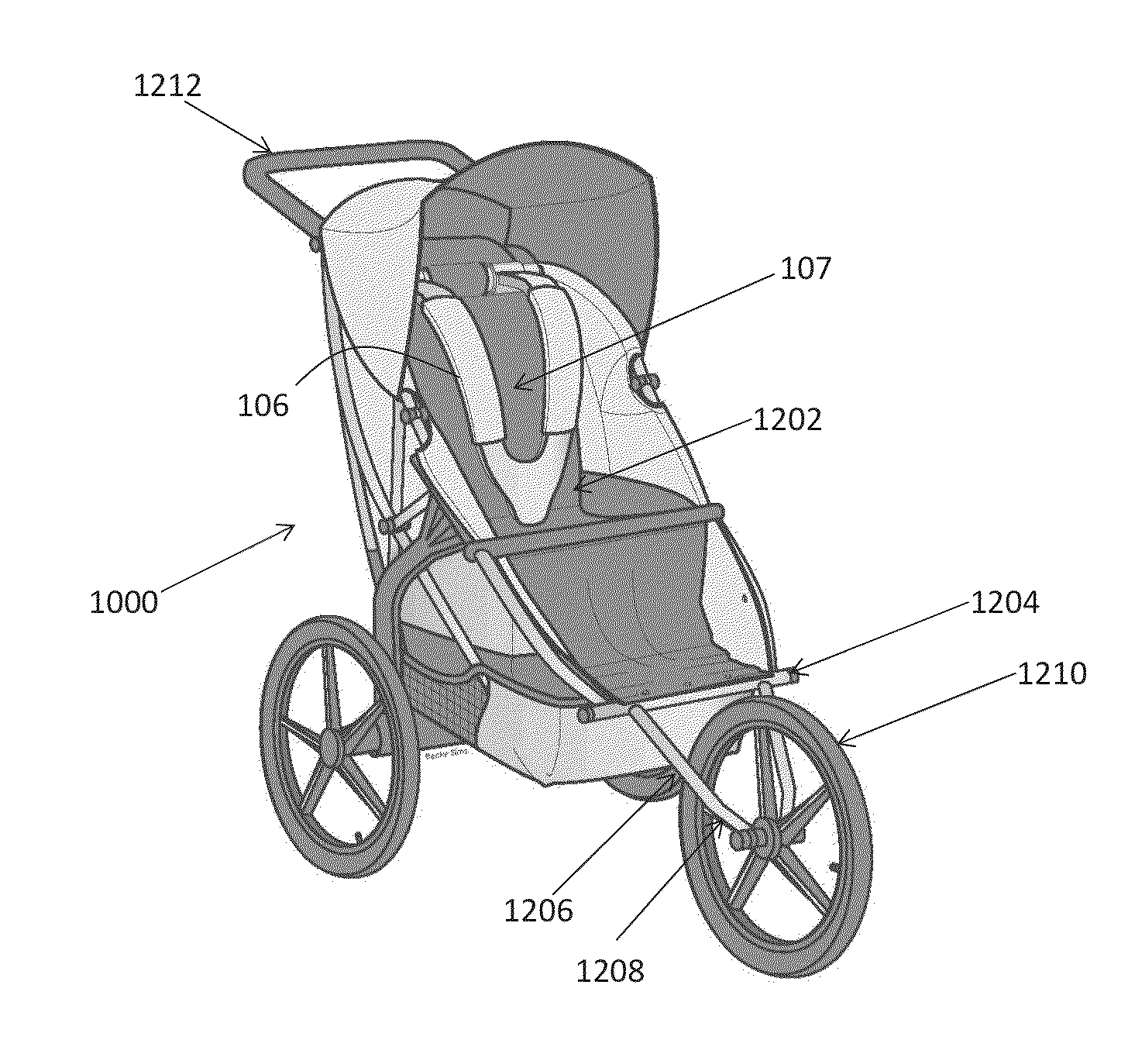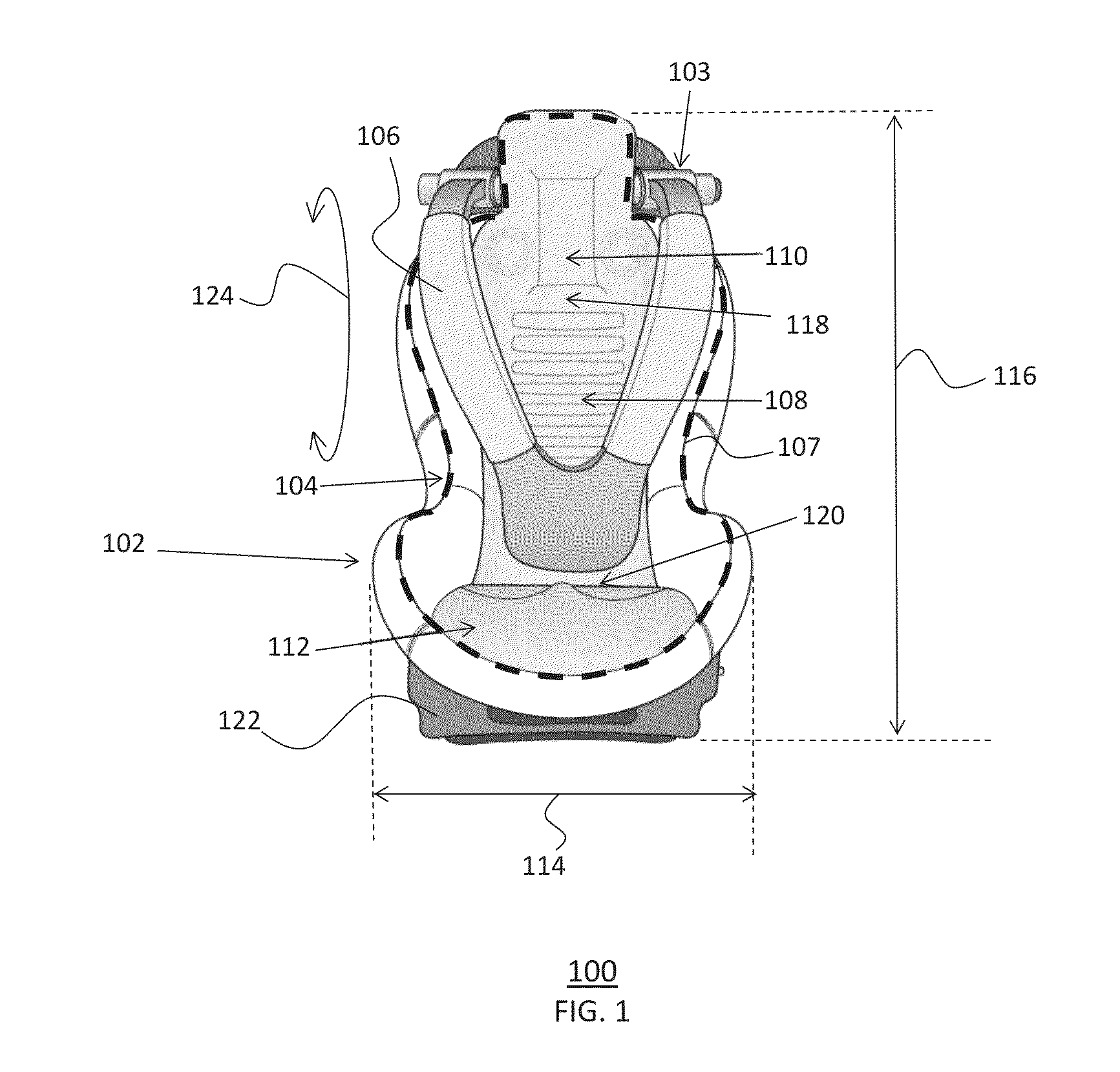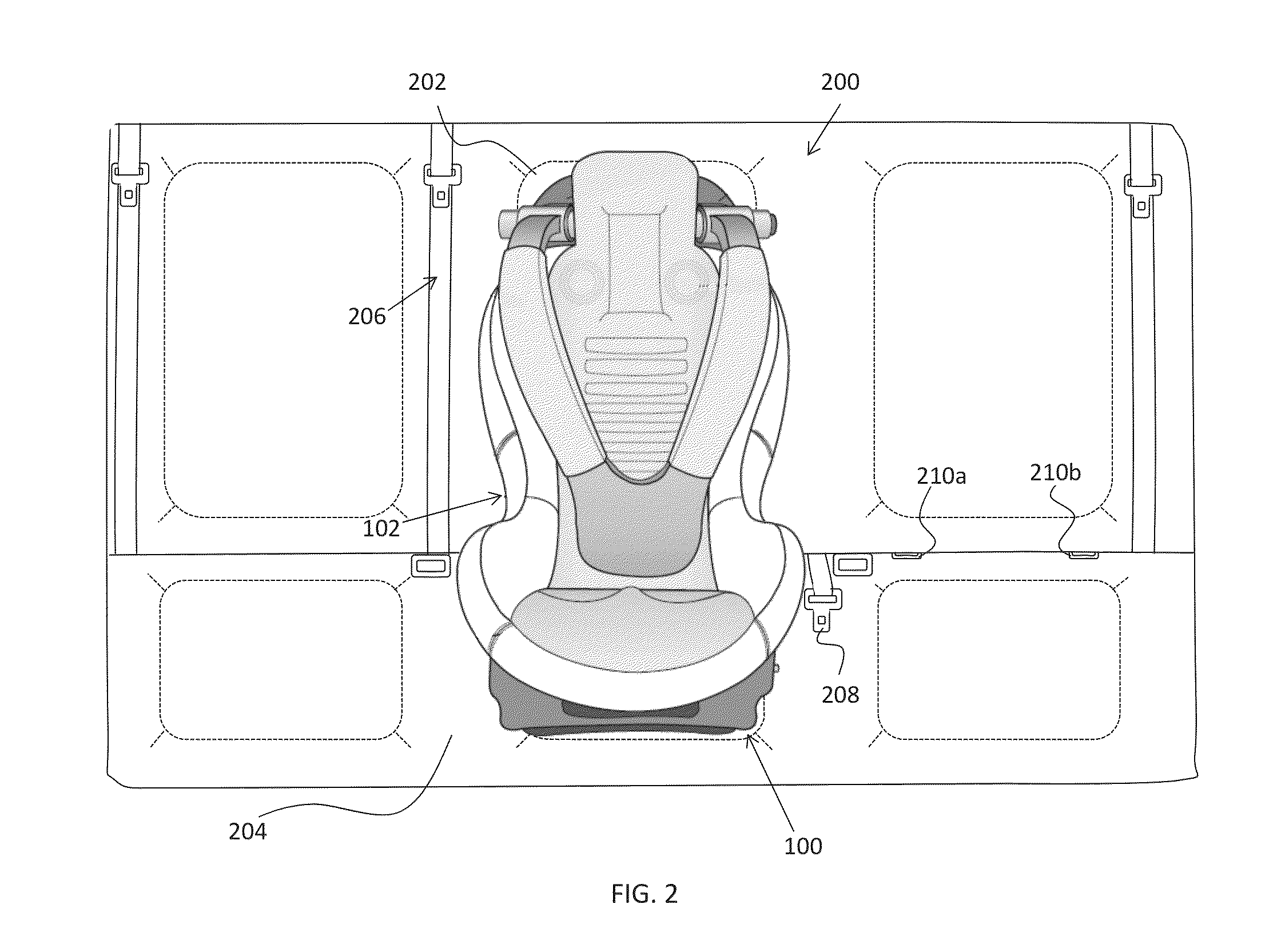Child restraining seat
a child restraint and seat technology, applied in the field of child restraint/safety devices, can solve the problems of inconvenient, unsafe, uncomfortable, children being injured when retracted, etc., and achieve the effect of quick and easy securement of the occupan
- Summary
- Abstract
- Description
- Claims
- Application Information
AI Technical Summary
Benefits of technology
Problems solved by technology
Method used
Image
Examples
Embodiment Construction
[0045]While the specification concludes with claims defining the features of the invention that are regarded as novel, it is believed that the invention will be better understood from a consideration of the following description in conjunction with the drawing figures, in which like reference numerals are carried forward. It is to be understood that the disclosed embodiments are merely exemplary of the invention, which can be embodied in various forms.
[0046]The present invention provides a novel and efficient seat to safely and comfortably restrain a child. Embodiments of the invention provide a roller-coaster-type restraining member that effectively restrains a child from the front of the seat, giving the child additional security and comfort. The novel roller-coaster-type child restraint seat advantageously provides a securing and unsecuring mechanism that is by far more simple and efficient than any system on the market today. Because infant and child car seats are attached to th...
PUM
 Login to View More
Login to View More Abstract
Description
Claims
Application Information
 Login to View More
Login to View More - R&D
- Intellectual Property
- Life Sciences
- Materials
- Tech Scout
- Unparalleled Data Quality
- Higher Quality Content
- 60% Fewer Hallucinations
Browse by: Latest US Patents, China's latest patents, Technical Efficacy Thesaurus, Application Domain, Technology Topic, Popular Technical Reports.
© 2025 PatSnap. All rights reserved.Legal|Privacy policy|Modern Slavery Act Transparency Statement|Sitemap|About US| Contact US: help@patsnap.com



